In a rural village, nestled between rolling hills and bordered by winding rivers, the arrival of the planting season marks the beginning of a farmer’s most crucial time of year. This is the time when the entire rhythm of the village shifts. For the farmer, preparing to cultivate a paddy field is not merely a task but a deeply ingrained ritual that connects them to the land, their ancestors, and the cycles of nature. The preparation involves meticulous planning, a deep understanding of the environment, and hard work, ensuring that each phase is carried out with care and precision to ensure a bountiful harvest.
The early morning mist still lingers as the farmer begins his day. The air is fresh, with the earthy scent of dew on the ground filling the atmosphere. He wakes before the sun, knowing that each moment before the heat of the day arrives is precious. His tools are already laid out, ready for the day's work. The farmer’s hands are calloused from years of labor, and his mind is steady, accustomed to the rhythm of the agricultural year. The day will be long, but the work must begin.
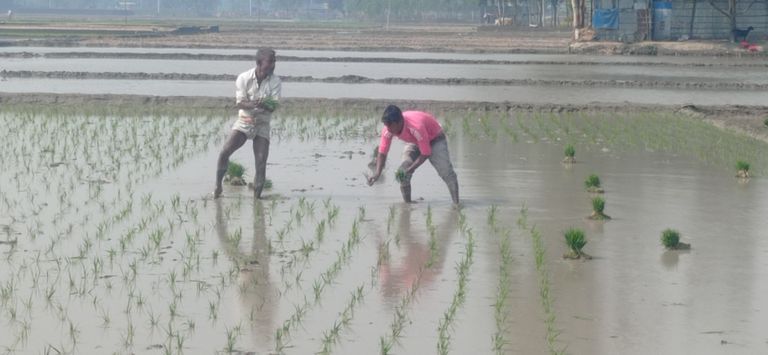
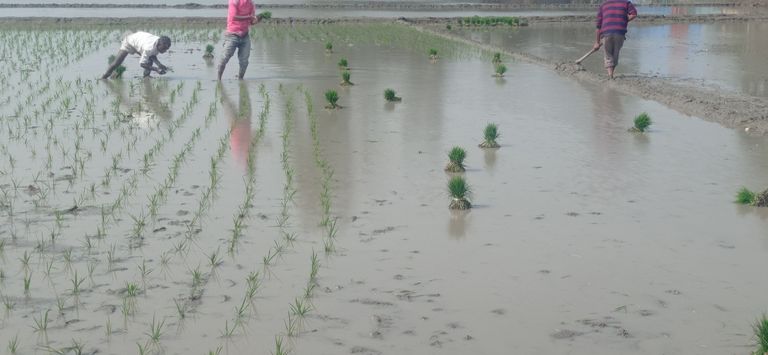
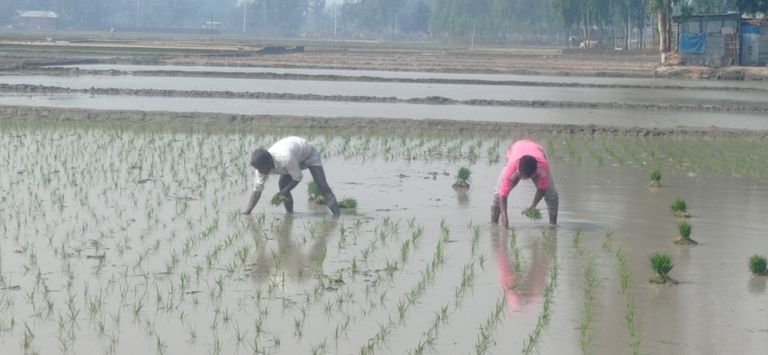
Before anything else, the farmer surveys his paddy field, assessing the condition of the land. The field lies in a gentle slope, with the surrounding landscape of mountains providing a breathtaking view. He can see the path of the irrigation channels that feed the paddy fields, winding like veins across the landscape. The water in these channels, which is a lifeline for the rice, is steady but low, as the dry season still holds sway. The farmer knows that to begin cultivation, he needs to ensure that the water supply is in good condition. He walks along the irrigation channels, checking for any blockages or damage. The water must flow evenly across the entire field to provide the necessary moisture for the seeds.
One of the first steps in preparing the field is the clearing of any overgrown vegetation. In the offseason, wild grass and shrubs tend to invade the fields, often thickening the soil and making it difficult for the rice to grow. The farmer grabs a sickle, a tool that has been passed down through generations. With practiced hands, he begins to cut down the stubborn weeds. The swish of the sickle through the tall grass is rhythmic, almost soothing. Each swipe clears a patch of land, and soon the field starts to look more manageable. This is not just about clearing the field; it's also about preparing the soil for the heavy rains that are soon to come.
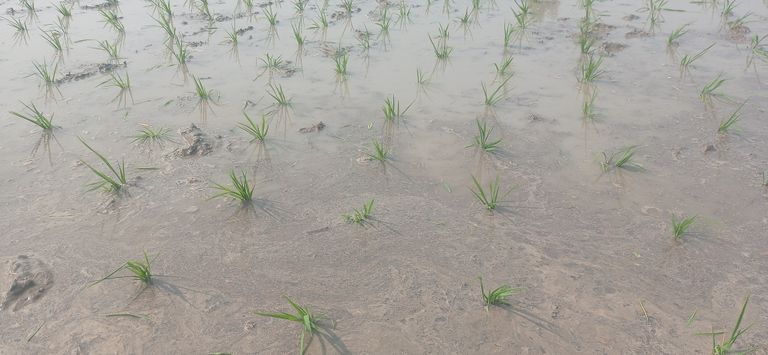
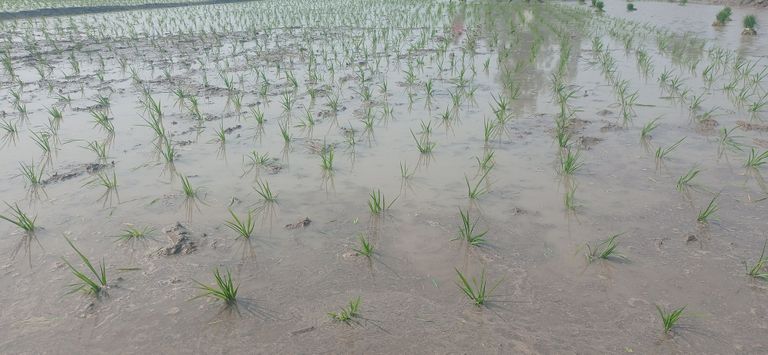
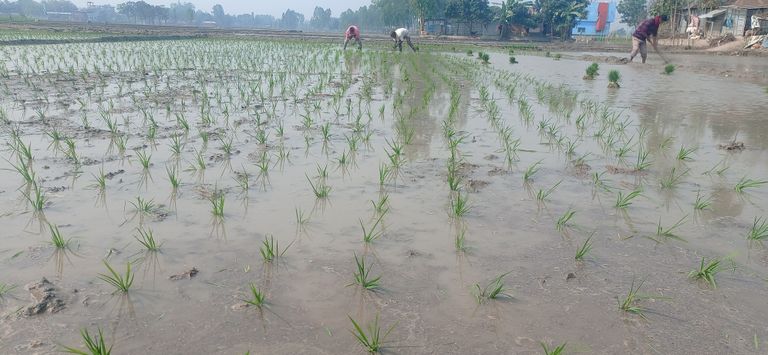
After the weeds are cleared, the next step is to break the soil. Using a plow drawn by oxen or sometimes a tractor, the farmer loosens the compacted earth, turning it over and exposing the rich, dark soil beneath. The soil of a paddy field must be soft and loamy, allowing water to seep in easily while also maintaining a solid structure for the rice roots to grow. The plowing process is long and laborious, but it is essential for ensuring that the field is in the right condition for planting. As the farmer guides the oxen or tractor, he moves in straight lines, each furrow deeper than the last. The soft earth forms deep ridges that will hold water once the rains come. The plowing is done carefully to avoid disturbing the natural flow of water through the field.
While the plowing continues, the farmer's family begins the task of preparing the seedbeds. Rice cultivation begins with the careful selection of high-quality seeds. The seeds chosen are often the best from the previous harvest or those that have been carefully saved for the new season. In the village, rice varieties are treasured, with each farmer knowing which variety thrives best in the soil and weather conditions of the area. Some families might also exchange seeds with their neighbors, creating a sense of community as they all prepare for the season together.
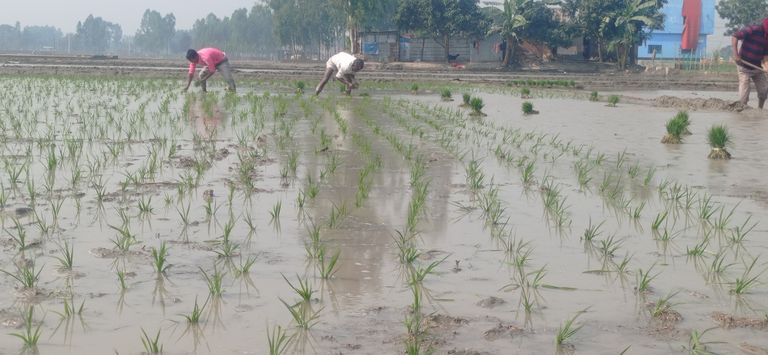
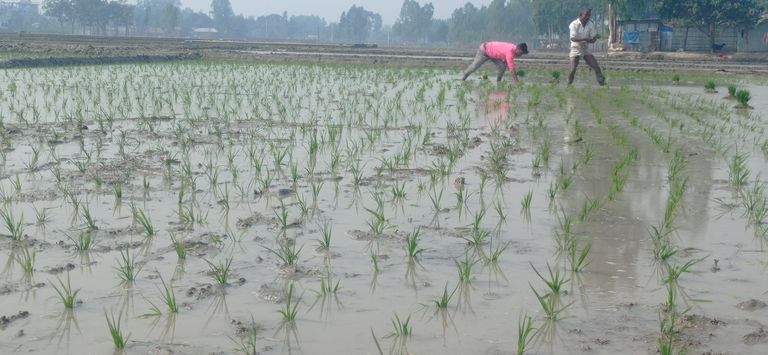
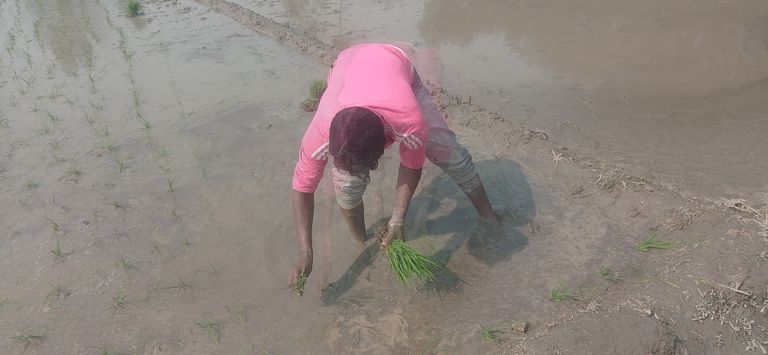
The seeds are soaked in water for a day or two, softening them and ensuring they are ready for planting. Once soaked, the farmer's family prepares small patches of land known as seedbeds, where the young rice seedlings will grow before being transplanted into the main paddy field. These seedbeds are carefully prepared, as the health of the seedlings at this early stage determines the success of the entire crop. The soil in the seedbeds is fine and moist, and the family spreads the soaked rice seeds evenly across the surface. The seedlings will be kept in these beds for a few weeks, carefully tended to, with regular watering and occasional weeding, until they are strong enough to be transplanted.
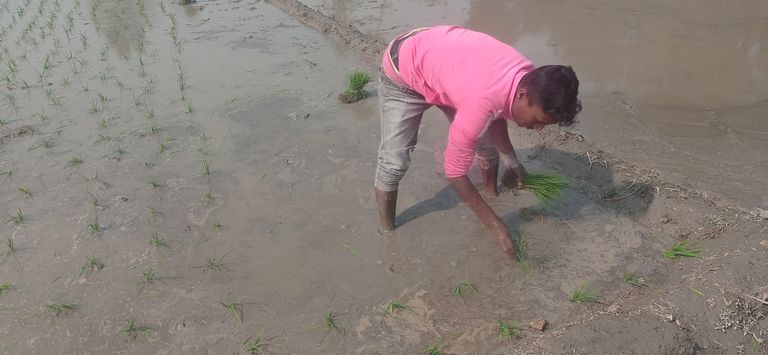
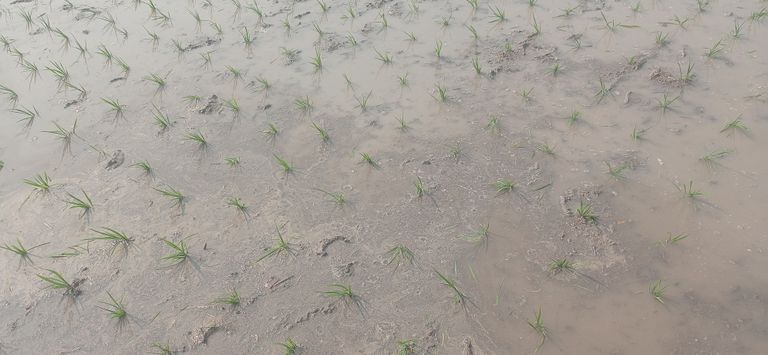
Meanwhile, the farmer keeps an eye on the weather. The timing of the rains is crucial for the cultivation of rice. Too early and the field will flood before the rice is ready to be planted; too late and the rice will suffer from the heat and dryness of the soil. In this rural village, the farmer often relies on local knowledge, passed down from generation to generation, to understand when the rains will come. His father and grandfather knew these patterns well, and so does he. The farmer looks to the sky, studying the clouds and feeling the humidity in the air. It won’t be long before the monsoon rains arrive, and when they do, the field will flood quickly.
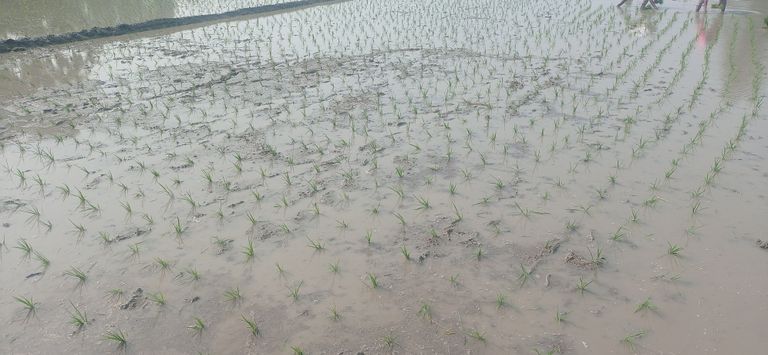
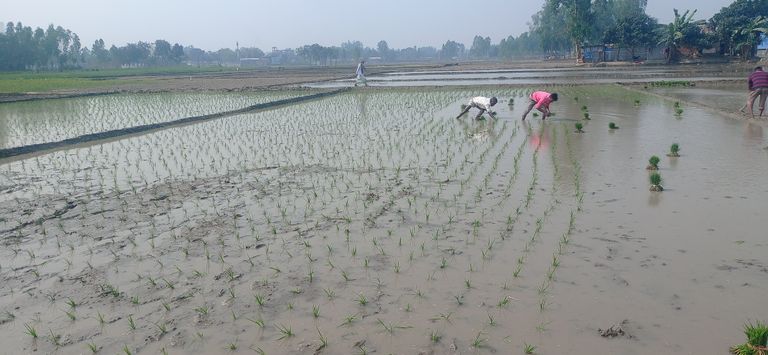
Once the plowing is complete and the seedbeds are ready, the next crucial task is the preparation of the irrigation system. In a paddy field, water is key, and it must be carefully managed throughout the growing season. The farmer ensures that the irrigation channels are clear and ready to bring in the first rains. The field itself is designed to hold water, with small embankments created to trap water within its borders. These embankments are checked for leaks and reinforced as needed. The farmer carefully inspects the channels, making sure they lead water evenly throughout the field. He also tests the depth of the water in the field, ensuring that it will be just right for the rice to take root.
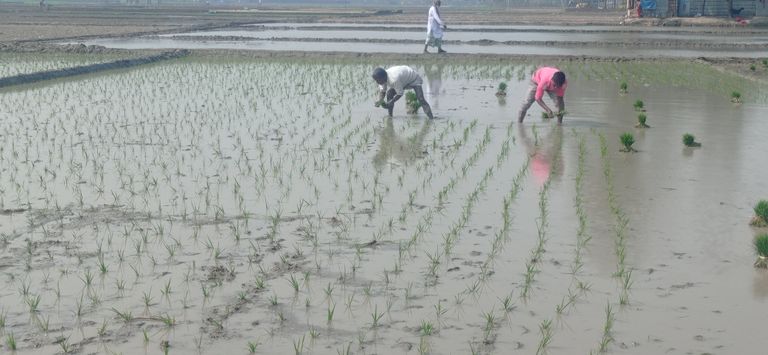
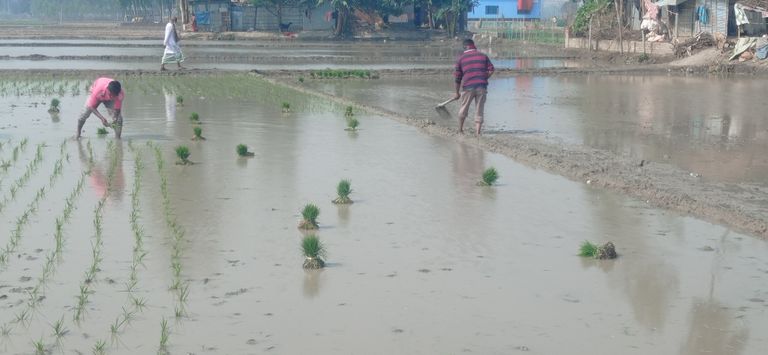
With all the preparations in place, the final step before planting is the preparation of the soil. This involves creating small, level patches within the field to receive the young rice plants. The farmer uses a harrow or sometimes his hands to smooth out the soil, breaking down any large clumps and ensuring that the surface is even. This process is vital because rice grows best in shallow, evenly watered fields. Once the soil is prepared, and the water level is perfect, it’s time to plant the seedlings.
On the day of planting, the farmer and his family return to the field, their hands ready to work. The young seedlings from the seedbeds are carefully uprooted and transplanted into the flooded field. The water glistens under the sun as the farmer moves between the rows, placing each seedling gently into the mud. The work is slow and deliberate, as each seedling is planted with care to ensure it grows strong and healthy. The transplanting process is done by hand, a labor-intensive task that requires patience and skill.
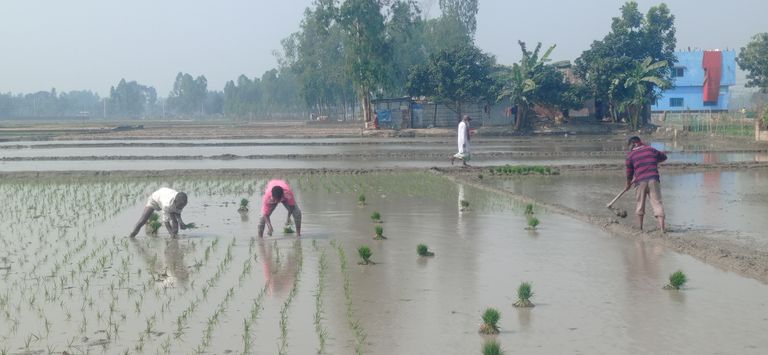
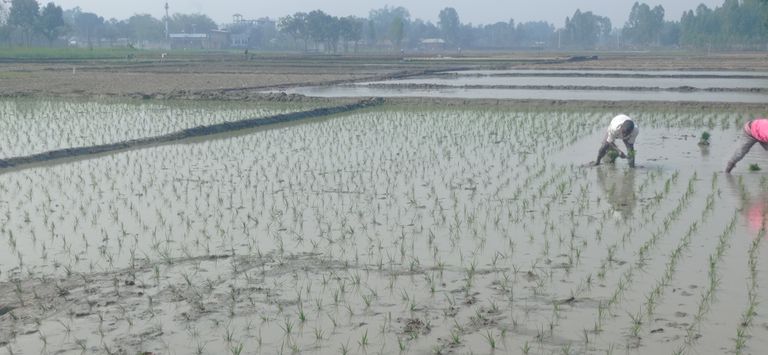
As the field slowly fills with rows of young rice plants, the farmer feels a deep sense of satisfaction. He knows that the coming months will bring their challenges—storms, pests, and disease—but at this moment, the field is ready. The stage is set for the rice to grow, nurtured by the soil, the water, and the hard work that has gone into its cultivation. In this village, where the cycles of nature govern the lives of the people, the farmer's efforts are a testament to the relationship between human labor and the land. It is a cycle that has endured for generations, and as the field begins to fill with rice, the farmer feels connected to his ancestors and to the future harvest that will sustain his family and the village for another year.
So far Today...
Stay Home
Thanks for Your Time Friend.
♥♥♥♥♥♥
Ok
See you Again in a New blog.
Thanks for being with me.
Plese Follow Me......
@mspbro
★★To contact me★★
Subscribe My 3speak Channel https://3speak.online/user/mspbro
Follow me Twitter https://twitter.com/mdsumonpra
Add me Facebook https://www.facebook.com/sumon.mim84
Congratulations, your post has been upvoted by @dsc-r2cornell, which is the curating account for @R2cornell's Discord Community.
Enhorabuena, su "post" ha sido "up-voted" por @dsc-r2cornell, que es la "cuenta curating" de la Comunidad de la Discordia de @R2cornell.